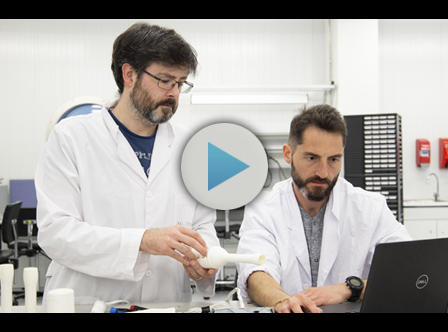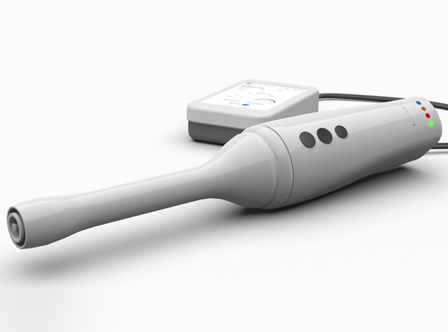PROJECTS
The technology centre is collaborating with a company called Innitius to develop a functional prototype using torsion waves to diagnose pregnant patients associated with a risk of imminent preterm birth to avoid unnecessary hospital admissions for those patients that are perfectly healthy.
Preterm births have now become the main cause of mortality for boys and girls under five years of age, to the extent that, in 2017, 2.5 million children died due to this problem. This figure is 40% higher than what was reported in 1990 according to data supplied by the World Health Organisation.
In order to accommodate these figures to the 2030 objectives set by the WHO and UN and to reach neonatal mortality rates of 1.2% and 2.5% for children under five, the Tekniker technology centre, a member of the Basque Research and Technology Alliance (BRTA), is currently working on optimising a device that uses torsion waves. Based on a design from Innitius, the aim is to address one of the most significant problems faced by obstetricians nowadays, namely, false alarms associated with premature births. These false alarms have an overwhelming impact as 85% of the patients admitted to hospitals presenting with spontaneous labour symptoms are classified as cases of this kind.
The techniques currently being used to diagnose false alarms related to preterm births are based on Fibronectine and PAMG-1 tests, although they give more than 70% of false positives. By perfecting this new tool, it will be possible to reduce the rate of hospital admissions that have a big impact on health care systems (associated with costs resulting from unnecessary admissions) and are terribly upsetting their relatives.
The prototype Tekniker is currently working on is called “Fine Birth” designed by a company called Innitius in collaboration with the University of Granada and the Andalusian Health System.
Fine Birth uses a technology based on torsion waves to observe changes in the rigidity of uterine tissues during the pregnancy. This option, together with an algorithm that combines multiple variables and artificial intelligence tools, allows estimates to be made with regard to the risk a pregnant woman may face in terms of preterm birth seven days after the test has been performed. The Innitius team is constantly working on future applications focused on diagnosing cervical incompetence, on evaluating delivery induction processes or optimising in vitro fertilisation techniques.
Tekiniker’s goal is to optimise and improve the device so that clinical validations can performed to fully ascertain this technology so it may eventually transition into the marketing stage.
More specifically, the technology centre is involved in technological development work connected to intravaginal probes and their reading units.
Tekniker’s high degree of specialisation in areas such as design and mechanical development, design and electric-electronic development as well as the design, manufacture and commissioning of prototypes will overcome a number of problems connected to this probe to eventually deliver a “ready to market” health care product.
The technology centre is currently focused on implementing a new and more reliable emitter to improve signal delivery and the use and fixation of sterile membranes. Another of its goals consists in incorporating new materials and designing a better method to locate the emitter more centrally.
As regards the reading unit itself, Tekniker will provide a battery powered system as well all of the electronic miniaturisation required to design an autonomous and portable “point of care” device.
In summary, it must be easy to scale the new, improved device to facilitate industrial production and also to put together a probe that is capable of meeting requirements that apply to health care products without modifying its behaviour or operation. The new devices will arrive in the summer of 2020.





